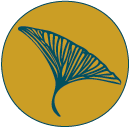
May 2024
Edible Landscapes, Edible Bodies was an artistic intervention at Harvest Festival Marrakech and the International Society of Ethnobiology Congress 2024: Biodiversity and Cultural Landscapes: Scientific, Indigenous and Local Perspectives. It brought together artists, activists, fermentation explorers, growers, gastronomes and ethnobotanists to address questions around healing, justice and sympoiesis through a journey into outer and inner edible landscapes, from people to plants, from land to the microorganisms who make up our bodies and to which we owe our health and that of the soil.
Edible Landscapes, Edible Bodies was a collaboration with a cohort of students form Um Mam I Melting Pot cookery School and it included 2 sessions of knowledge exchange with the students, one online and one in person at the permaculture project Farm Slimane.
Concept:
Foraging is an effective method of both ethnobotanical knowledge transmission and embodied research. As a practice, it requires us to engage all our senses and get out on the land. It creates the ideal conditions for learning and connecting to plants and the land we share with them. Edible Landscapes, Edible Bodies proposed healing as an all-encompassing act that requires us to feel beyond ourselves and to make space for complexity and diversity around us and within ourselves. Through the engagement of all senses, food was offered as a lense through which to see ourselves, memory and ways of relating to our bodies and those of others, whether human or more-than-human.
Questions:
How is the way we relate to our and other bodies mirrored in the way we relate to land? How can local and foraged ingredients help us connect to both our bodies and the ecosystems we inhabit – and those that inhabit us – by redrawing our relationship with them? How are edible landscapes and edible bodies configured and how are they affected by human activities on the land that occupy, pollute, exploit and deplete?

July/ August 2023
‘a useless guide to Vartopo and its weeds’ is the outcome of a collaboration with illustrator Andrea Popyordanova.
Challenging notions of beauty and usefulness in our relationship to land and plants this publication is the result of collaborative work centred around Vartopo, a vast meadow on the edge of Sofia which is neither city nor garden. Published by the Centre for Social Vision the book investigates people’s natural inclination to collect, name and classify, and questions the language we use to talk about plants, as well as the values we attach to them. Loosely inspired by herbaria and botanical field guides, it challenges these formats and the way they mediate our relationship to plants.
The book contains plants in the order in which we encountered them when we entered Vartopo, as well as texts and references, which emerged in our conversations about them and hidden in folded pages in between the plants.
The unfolding cover is a key to how to understand both the guide, the place, and how to use this knowledge to navigate through other spaces.
Read our interview: Neither a city nor a garden

September 2024
Erbass al Festival Panorama
A weekend of plant identification walks, on the occasion of Panorama Monferrato, the fourth edition of the itinerant exhibition conceived by ITALICS, in collaboration with Erbass, OGR Torino, and conducted in the excellent company of Nina Muth (Fermentonina) and the “erbolaro” Mauro Vaglio.
ITALIAN: Un weekend di escursioni di riconoscimento di erbe spontanee commestibili, in occasione di Panorama Monferrato, la quarta edizione della mostra diffusa ideata da ITALICS, in collaborazione con Erbass, le OGR Torino, condotte in compagnia di Nina Muth (Fermentonina) e l’erbolaro Mauro Vaglio.
